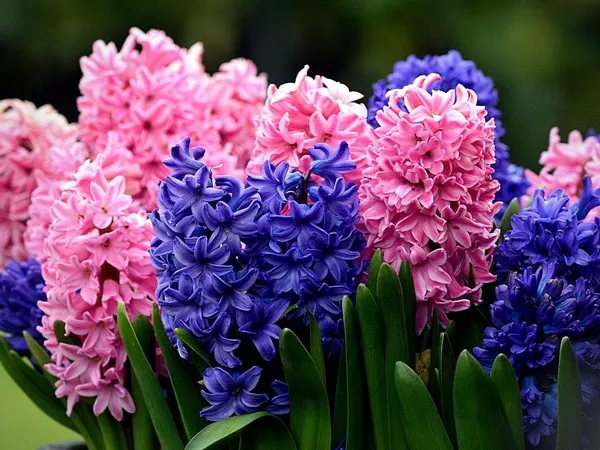Gardening enthusiasts often face the challenge of harmonizing their passion for cultivating beautiful flowers with the presence of wildlife, particularly deer, that can sometimes nibble away at their carefully nurtured plants. However, with thoughtful planning and the selection of deer-resistant flowers, it’s possible to create a vibrant and flourishing garden without constantly battling the appetite of these graceful creatures. In this article, we will delve into the world of deer-resistant flowers, exploring effective strategies for protecting your garden, understanding deer behavior, and discovering a variety of stunning flower options.
Understanding Deer Behavior
Before embarking on the journey to create a deer-resistant garden, it’s essential to gain insight into deer behavior. Deer are attracted to gardens for their abundant food sources, including tender leaves, shoots, and blooms. They are more likely to target plants that are easily accessible, succulent, and particularly fragrant. Understanding their patterns of feeding and the plants they prefer can provide valuable information when selecting flowers for your garden.
It’s important to note that the term “deer-resistant” does not guarantee absolute protection. While there are no plants that deer won’t eat under any circumstances, there are certainly flower varieties that are less appealing to them due to factors such as taste, texture, or fragrance. A successful deer-resistant garden involves a combination of careful plant selection, deterrent strategies, and continuous observation.
Strategies for a Deer-Resistant Garden
1. Plant Selection
Choosing the right flowers is the cornerstone of a deer-resistant garden. Opt for plants that deer tend to avoid due to their characteristics. This includes flowers with strong scents, rough textures, or those containing compounds that are unappetizing to deer. By thoughtfully curating your garden’s floral inhabitants, you can significantly reduce the likelihood of deer-related damage.
2. Diversity is Key
Creating a diverse garden with a mix of deer-resistant flowers and other plants can help deter deer. They are less likely to linger in areas where they don’t find their preferred snacks. Interspersing your flower beds with aromatic herbs, native grasses, and plants that deer generally avoid can create an environment that is less appealing to them.
3. Repellents and Barriers
Incorporating natural or commercial repellents can provide an additional layer of protection for your garden. These repellents often emit scents that deer find offensive, deterring them from approaching your plants. Fencing is another effective strategy, especially if it’s tall enough and well-constructed to prevent deer from easily accessing your garden.
4. Garden Layout
Strategically planning your garden layout can also play a role in deterring deer. Placing deer-resistant flowers closer to the edges of your garden or near areas frequented by deer can divert their attention away from your more delicate blooms.
Deer-Resistant Flowers: A Spectrum of Beauty
1. Daffodils (Narcissus spp.)
Daffodils, with their trumpet-like blooms and vibrant colors, are a popular choice for deer-resistant gardens. Their bulbs contain toxic compounds that deer tend to avoid, making them a reliable addition to your floral display.
2. Lavender (Lavandula spp.)
The aromatic allure of lavender is a delight to humans and a deterrent to deer. Its strong scent can mask the scents of other plants and make your garden less appealing to these animals.
3. Bleeding Heart (Dicentra spp.)
Bleeding Heart plants feature unique heart-shaped blooms that are as charming as they are deer-resistant. These perennials thrive in shady spots, adding a touch of elegance to your garden.
4. Foxglove (Digitalis spp.)
With their tall spikes of bell-shaped flowers, foxgloves are not only visually striking but also unappetizing to deer due to their toxicity. Their presence can bring vertical interest to your garden while discouraging grazing.
5. Yarrow (Achillea spp.)
Yarrow is a hardy perennial with feathery foliage and clusters of flowers in various colors. Its strong fragrance and textured leaves make it an excellent choice for deterring deer.
6. Salvia (Salvia spp.)
Salvias, known for their vibrant spikes of flowers, come in a range of colors and sizes. Their aromatic leaves and striking appearance can discourage deer from browsing.
Cultivating a Resilient Garden
1. Site Selection
When planning your garden, consider the location’s proximity to areas where deer are likely to travel. Gardens closer to wooded areas or deer habitats may require more vigilant protection measures.
2. Regular Monitoring
Even with deer-resistant plants, it’s essential to monitor your garden regularly. Deer behavior can change, and they may develop a taste for plants they previously avoided. Regular observation allows you to take action promptly if you notice any signs of deer activity.
Conclusion
Creating a flourishing garden that withstands the presence of deer is an achievable endeavor with the right strategies and plant choices. By selecting a diverse array of deer-resistant flowers, implementing repellents, and considering your garden’s layout, you can strike a balance between nature’s beauty and its inhabitants. Remember that while no garden can be entirely deer-proof, a well-planned garden that incorporates these principles can offer you the joy of nurturing stunning blooms while coexisting harmoniously with the wildlife that shares your space.


